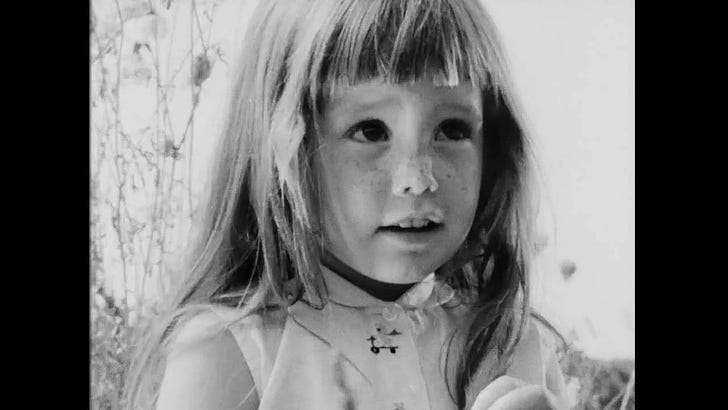The Forgotten Playbook for Fighting Disinformation
Tony Schwartz’s Responsive Chord theory predicted the media war we’re in—and how we might still win it.
When I was a young media consultant just starting out, I had the rare privilege of meeting—and being coached by—the legendary Tony Schwartz. Tony wasn’t just a media strategist; he was a true pioneer, a visionary who fundamentally reshaped how we think about communication. He created the iconic “Daisy” ad for President Lyndon Johnson—still regarded as one of the most powerful and effective political ads in American history.
At the heart of Tony’s work was a groundbreaking idea he called The Responsive Chord: the belief that the most effective messages don’t implant new ideas—they resonate with the feelings, memories, and beliefs people already carry. Media, Tony taught, shouldn’t act like a megaphone blasting outward; it should be a mirror reflecting the audience’s own lived experience back to them.
In 1973, Tony Schwartz—sound archivist, ad man, and media philosopher—wrote The Responsive Chord, a book that’s more relevant today than it ever was in the age of radio and television.
His argument was deceptively simple but radically powerful:
“The goal of effective communication is not to inform but to resonate.”
Schwartz believed the strongest messages are not those that introduce something new, but those that reactivate feelings, memories, and beliefs already embedded in the audience’s experience.
He called this resonance—and insisted that media should function more like a mirror than a megaphone.
You don’t speak to the audience.
You speak from within them.
The Responsive Chord vs. The Firehose of Falsehood
In today’s disinformation-saturated world, the right has mastered Schwartz’s model—whether they realize it or not.
Their messages don’t try to "teach" people anything new.
They activate:
fear that’s already present,
nostalgia already felt,
resentment already simmering,
and distrust of institutions long cemented.
They don’t convince.
They resonate.
This is the essence of the firehose of falsehood—not winning debates with airtight logic, but flooding the zone with emotionally charged content that echoes what people already believe.
It bypasses logic and strikes directly at identity.
What We Must Reclaim from The Responsive Chord
Tony Schwartz left us a blueprint. Here’s what we need to remember:
→ Media doesn’t transmit—it triggers.
Voters aren’t blank slates. They are overloaded, fragmented, carrying stories and scars.
The best messages strike a chord already vibrating inside them.
→ Meaning is not in the message—it’s in the response.
A message is only as powerful as the feeling it provokes.
As Schwartz put it: "The response, not the message, is the communication."
→ We must mirror experience.
People trust what feels familiar.
Our media must echo their language, their pain, their pride, their struggles—not elite abstractions or polished bullet points.
→ Emotion, not exposition, drives action.
Charts don’t move people.
Stories, sounds, symbols, identity cues—these are what ignite real action
Progressive Strategy Needs a Responsive Chord Reboot
Too much progressive communication still clings to a broadcast-era model: explain, inform, persuade.
But we’re no longer in the era of explanation.
We are in the era of resonance.
And the right is beating us at our own game—not because their ideas are better, but because their messages feel more personal, emotional, and true to the people they’re trying to reach.
To fight disinformation, we don’t need more facts.
We need more felt truths.
We need content that:
sounds like it comes from a trusted neighbor,
reactivates pride or pain,
reminds people of community over chaos,
and reflects the emotional experience of being left behind—and the hope of being lifted up.
From “Daisy” to TikTok
Tony Schwartz created the “Daisy” ad not because he thought a little girl plucking petals would persuade people with logic, but because it unleashed a fear they already carried deep inside them.
That same principle applies today.
If we want to beat the algorithm—and the authoritarian narratives it carries—we need to stop lecturing and start resonating.
Final Thought:
The right has built an empire on responsive chords.
Progressives are still fumbling with instruments.
But Tony Schwartz left us the sheet music.
Now we just have to play it.



More on the Daisy Ad: The “Daisy” ad, created by Tony Schwartz for President Lyndon Johnson’s 1964 campaign, is one of the most famous and influential political ads in American history. It featured a young girl picking petals from a daisy, counting innocently, before the scene abruptly shifted to a nuclear countdown and a mushroom cloud—tapping into deep, unspoken fears of nuclear war. The ad didn’t mention Johnson’s opponent by name or list policy arguments; instead, it struck a visceral emotional chord, showing the stakes without saying them outright. Its power came not from information, but from the overwhelming feeling it evoked—forever changing how emotional resonance would be used in political communication.
I work in social media and know this in my gut. Those who do not work in social media 24/7 have a difficult time with understanding this...
"A message is only as powerful as the feeling it provokes.
As Schwartz put it: "The response, not the message, is the communication."
Many progressive comms folks focus on facts over feelings. Facts are the starting point, not the end point.
As someone wrote recently, elite progressives spent their lives sitting in the front row at school (learning facts) while forgetting everyone in the back rows.